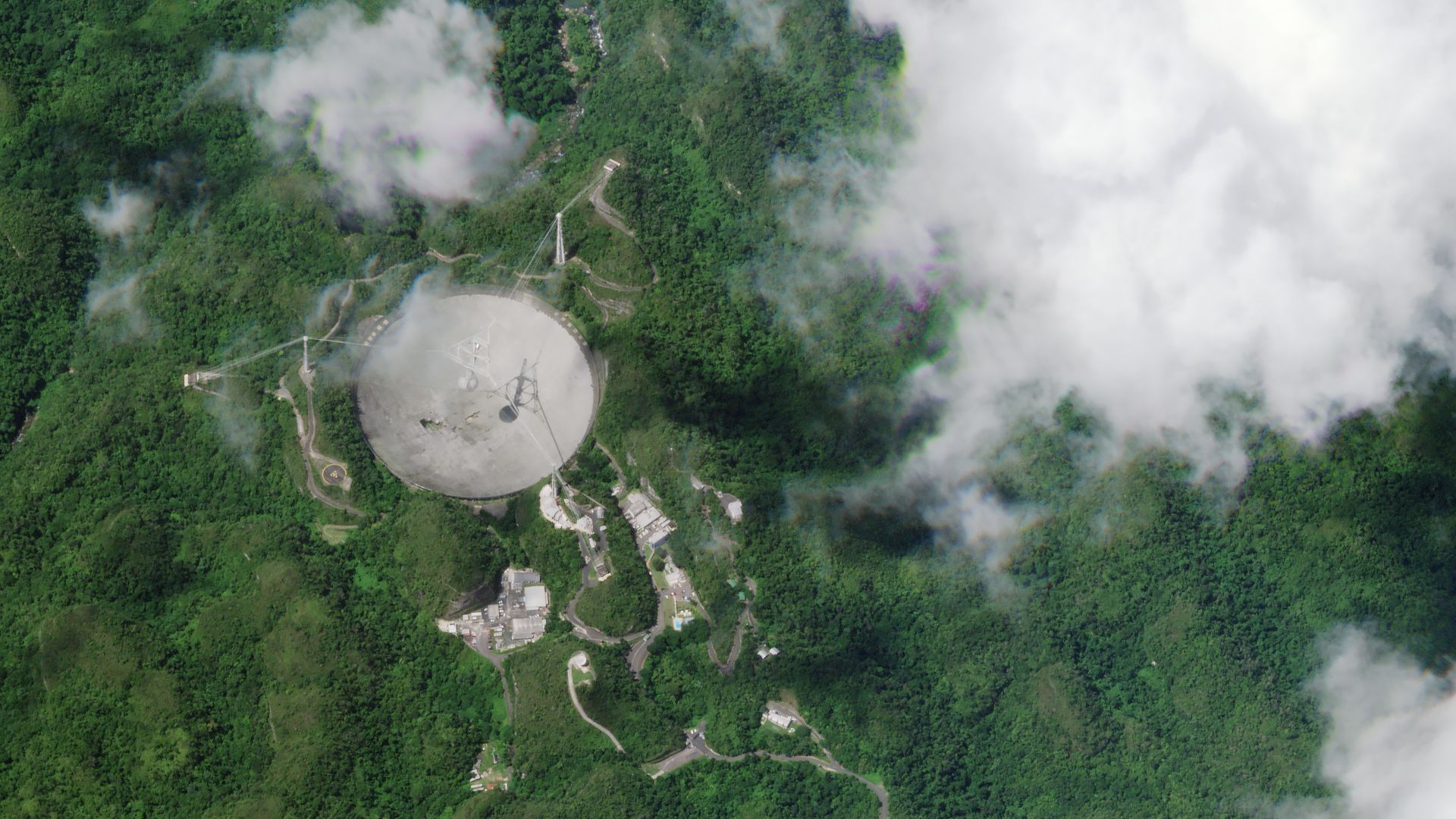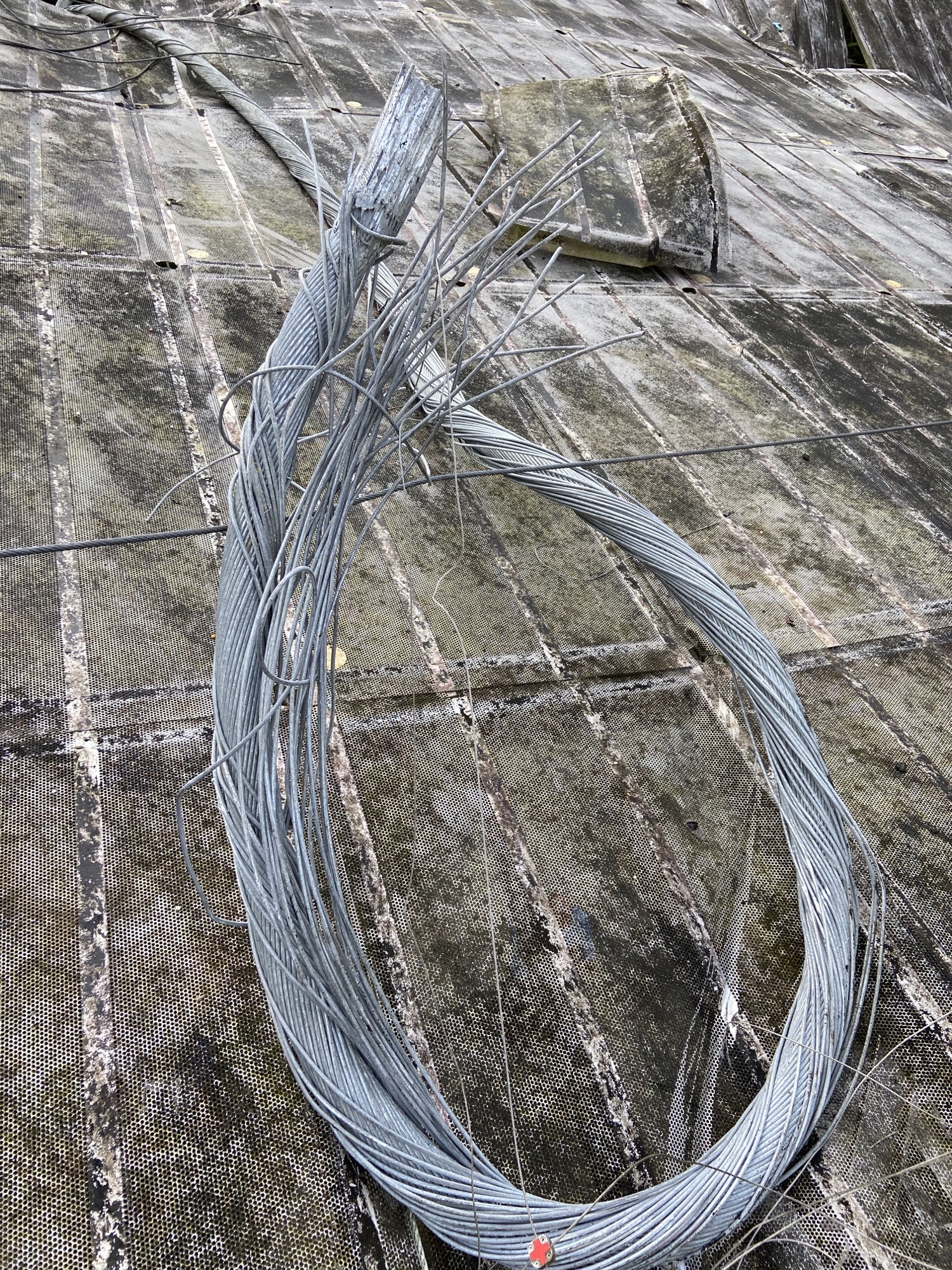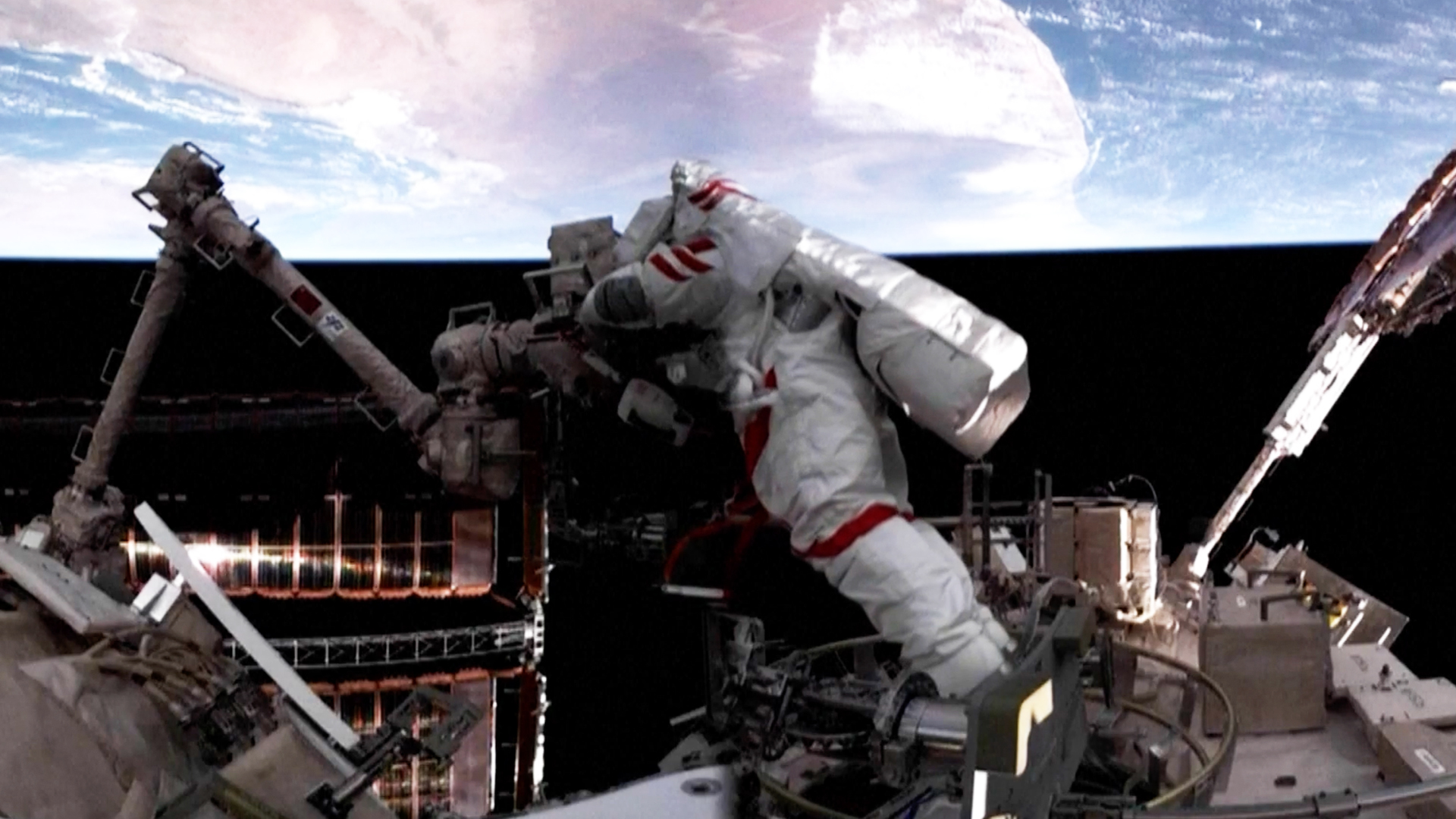The investigation into why a cable mysteriously broke on the Arecibo Observatory has begun
The surprise failure damaged the giant radio telescope's reflector dish.
Officials at the Arecibo Observatory in Puerto Rico still don't know what caused a cable failure that severely damaged the facility's iconic radio telescope this week, forcing it to shut down temporarily.
On Monday (Aug. 10), an auxiliary cable supporting a platform that is suspended above the 1,000-foot-wide (300 meters) radio dish broke and crashed into the telescope's reflector panels, creating a gash in the dish measuring about 100 feet (30 m) long.
In a news conference with reporters Friday (Aug. 14), Arecibo director Francisco Cordova said that 250 of the observatory's primary reflector dish panels were damaged, along with several support cables underneath the dish. But observatory officials have not yet fully assessed the extent of the damage or determined the cost of the repairs needed to get the 56-year-old radio telescope — once the largest single radio dish on Earth — back in action.
Related: The Arecibo Observatory: A giant radio telescope in photos
Cordova said that the auxiliary cable was designed to last at least another 15 to 20 years, so it's not clear why the cable failed. It was one of several auxiliary cables that were added to the observatory in the 1990s to help support a new addition to the telescope, called the Gregorian dome, which houses an antenna receiver on the platform.
In a statement issued Monday, UCF officials said that about six to eight panels on the Gregorian dome had been damaged by the broken cable, and that the platform used to access the dome was left slightly twisted. But it's not yet clear if the instruments inside the dome had been affected, Cordova said, adding that officials were still inspecting the damages.
Before observatory workers begin replacing the panels on the radio dish, their first priority will be to ensure the structural stability of the platform and to keep the staff safe, Cordova said.
Breaking space news, the latest updates on rocket launches, skywatching events and more!
No one was injured when the accident happened at approximately 2:45 a.m. EDT (0645 GMT) on Monday, as the facility was closed at the time. But if the cable had snapped during the daytime, with staff working on site, Arecibo employees could have been injured, Ramon Lugo, director of the Florida Space Institute at the University of Central Florida (UCF), told Science Magazine. UCF manages the observatory for the National Science Foundation.
The Arecibo Observatory has been shut down indefinitely until the telescope can be repaired. While the observatory is best known for its work in the search for life and potentially hazardous near-Earth asteroids, astronomers use it for a variety of space research and observations. Some of the work that has been put on hold until the telescope is fixed include studies of gravitational waves and pulsars, Cordova said.
Related: Arecibo Observatory weathers Tropical Storm Isaias to track potentially dangerous asteroid
While the extent of the damage is not yet clear, Cordova said he is confident that Arecibo will bounce back — as it has done several times before. In January of this year a major earthquake shut down Arecibo, and it survived significant damages from Hurricane Maria in 2017.
"The observatory has had a lot of opportunities over the years, and this is just another bump in the road," Cordova said. "We are a pretty resilient bunch."
Email Hanneke Weitering at hweitering@space.com or follow her @hannekescience. Follow us on Twitter @Spacedotcom and on Facebook.

Hanneke Weitering is a multimedia journalist in the Pacific Northwest reporting on the future of aviation at FutureFlight.aero and Aviation International News and was previously the Editor for Spaceflight and Astronomy news here at Space.com. As an editor with over 10 years of experience in science journalism she has previously written for Scholastic Classroom Magazines, MedPage Today and The Joint Institute for Computational Sciences at Oak Ridge National Laboratory. After studying physics at the University of Tennessee in her hometown of Knoxville, she earned her graduate degree in Science, Health and Environmental Reporting (SHERP) from New York University. Hanneke joined the Space.com team in 2016 as a staff writer and producer, covering topics including spaceflight and astronomy. She currently lives in Seattle, home of the Space Needle, with her cat and two snakes. In her spare time, Hanneke enjoys exploring the Rocky Mountains, basking in nature and looking for dark skies to gaze at the cosmos.



